Think of the golden age of steam, and the chances are you will think of The Flying Scotsman, the world’s most iconic steamtrain.
The Flying Scotsman which has endured a rollercoaster ride from spotlight to sidelines and back again, yet it still remains one of the most iconic images of Britain’s railway.
Designed by eminent steam locomotive engineer Sir Nigel Gresley and built at Doncaster Works in 1923, the Flying Scotsman was the flagship locomotive of the new London & North Eastern Railway (LNER), which included the East Coast main line from London to Edinburgh, and the routes from Edinburgh to Aberdeen and Inverness.
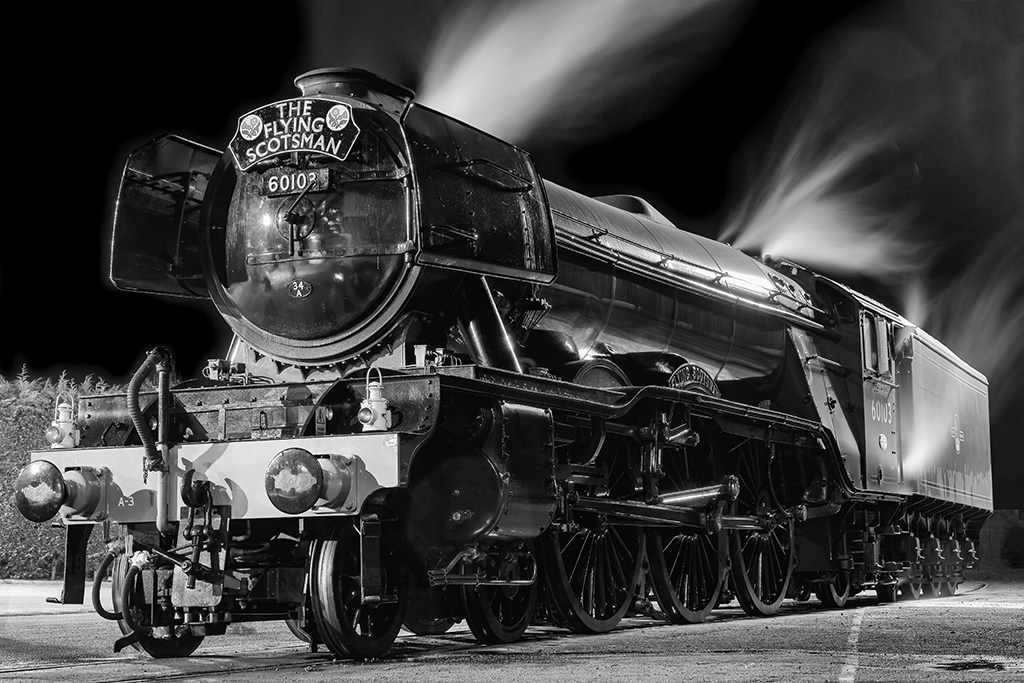
Heralded as a symbol of strength and modernity in the brave new world which emerged from the shadow of the First World War, the new engine was named after the renowned express passenger train service that had been running between London and Edinburgh since 1862.
With a swish emerald exterior, plush livery in eye-catching apple green and speeds other locomotives couldn’t possibly match, the Flying Scotsman quickly became the established star of the LNER fleet; its speed and glamour perfectly encapsulating the zeitgeist of the roaring Twenties and propelling the locomotive to national treasure status.
The Flying Scotsman lived up to its reputation by conquering a string of record-breaking feats, including hauling the first non-stop service between London and Edinburgh in 1928; playing a starring role in The Flying Scotsman, the first British talkie movie, in 1929; and becoming the first locomotive to achieve an authenticated 100mph run in 1934.
But things were to change for the country’s most famous steam engine when Britain’s short-lived peacetime crashed to a close in 1939.
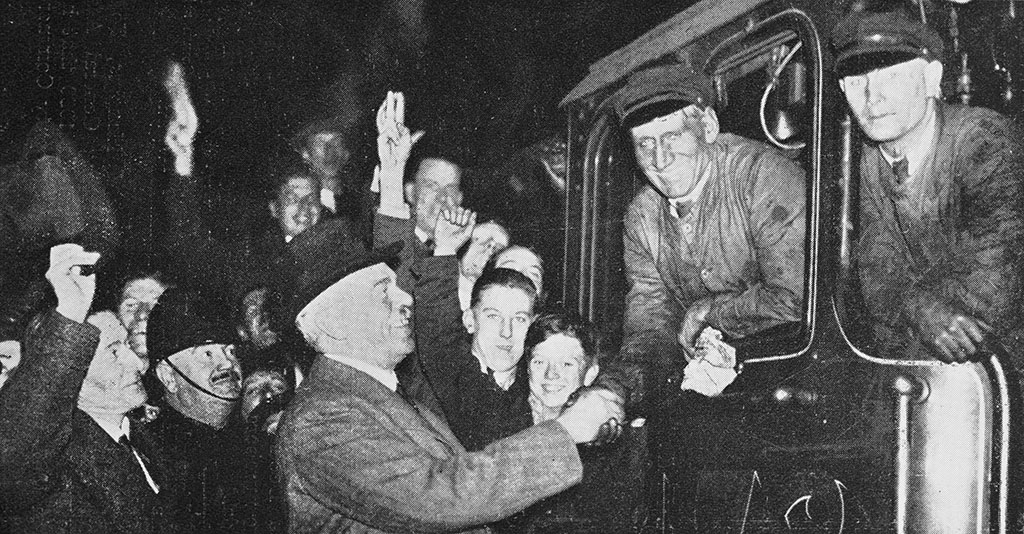
The Flying Scotsman breaks the 100mph mark in November 1934
With the advent of the Second World War, the steam star was transformed into a wartime workhorse, its previously iconic number 4472 becoming 103, while its distinctive green exterior was painted over in wartime black. Like the rest of the LNER fleet, the Flying Scotsman was put to serious work, hauling heavier loads with less-frequent maintenance.
It was a dangerous affair; trains were often driven to London during wartime with barrage balloons coming down in front of the engine. Drivers and their fireman had to hold their nerve while working in sweltering heat, as heavy tarpaulins were draped over the cab so that enemy aircraft couldn’t see the blazing fire within. The engine crews weren’t allowed to return home from London if there was an air-raid, and slept instead with Londoners in the underground.
After the war, priorities changed with the rampant fads and fancies of 1920s Britain significantly dampened down. The fame and favour bestowed on the once-beloved locomotive declined; it was no longer an aspirational symbol of the modern age, but an outdated relic of a bygone era.
In 1962, LNER celebrated the centenary of the Flying Scotsman service linking the capitals of England and Scotland by displaying a Deltic – the fastest and most powerful of the new diesel locomotives – at King’s Cross station. Its former pride and joy, the 1923 Gresley steam engine, was sent away to avoid sending an outdated message to the public.
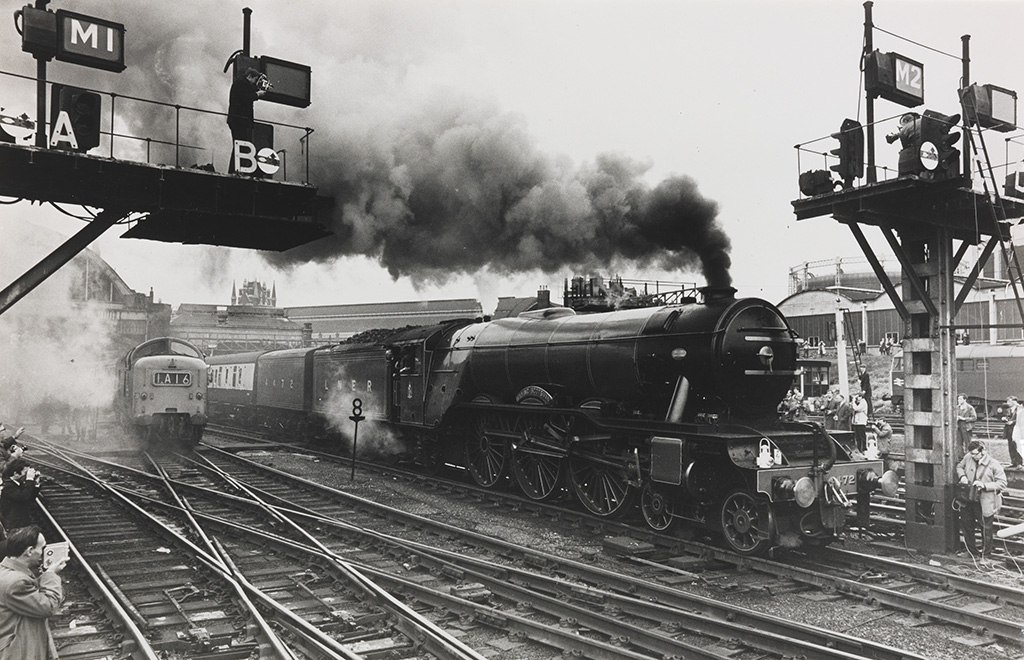
The Flying Scotsman, with its diesel namesake successor, leaves Kings Cross
With the Flying Scotsman no longer needed to promote its namesake service and the launch of British Rail’s modernisation plan, which largely swept steam away, the once-loved train became one of many steam locomotives facing the scrapyard after covering over two million miles on Britain’s tracks.
But with a resilience which became typical of Britain’s best-known locomotive, the Flying Scotsman wasn’t down for long. From hero to zero and back again, the train was destined for an exciting comeback as a sixties globetrotter, thanks to British businessman and railway enthusiast Alan Pegler, who had been witness to the Flying Scotsman’s exile from the centenary celebrations at King’s Cross, and wrote that he ’felt very sorry for 60103’.
In fact, Pegler felt so much sympathy for the beleaguered loco that he engineered a last-minute reprieve which once again brought it back to the public’s attention.
The year after the LNER centenary, Pegler bought the Flying Scotsman outright, sending it back to its birthplace at Doncaster Works, where it was restored to its former apple green glory and renumbered 4472. The restoration project captured an excited public’s imagination and the Flying Scotsman became the comeback kid of steam; a symbol of the 1960s railway preservation movement inspired by nostalgia for Britain’s railway past.
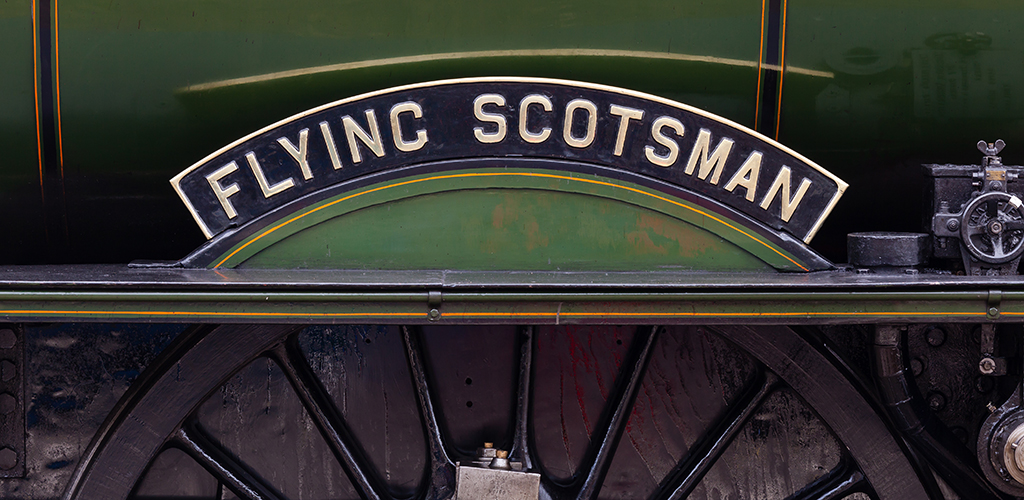
True to form, the locomotive legend enjoyed a few years in the spotlight once again, before exiting the swinging sixties in style, setting off on a tumultuous three year tour of the United States accompanied by a train including an English pub carriage, a Pipe Band Major, a Winston Churchill impersonator (a relative of the man himself), a bus and a group of tartan mini-skirted models. The American tour succeeded in bringing Pegler and his Scotsman international fame.
Unfortunately, the flamboyant escapade also succeeded in bankrupting the businessman, with Britain’s best-loved locomotive left stranded at a US army base.
Wealthy rail enthusiast Sir William McAlpine played hero of the hour, facilitating the Flying Scotsman’s return to Britain via the Panama Canal in January 1973, saving her from sale to an American consortium.
Despite the far-from-perfect end to the Flying Scotsman’s international travel, it wasn’t the last time the loco set sail to further climes, with the globe-trotting icon adding yet another stamp to its passport in 1988, this time heading for a tour of Australia where it racked up yet more railway records before becoming the first locomotive to circumnavigate the globe when it returned to the UK via Cape Horn in 1990.
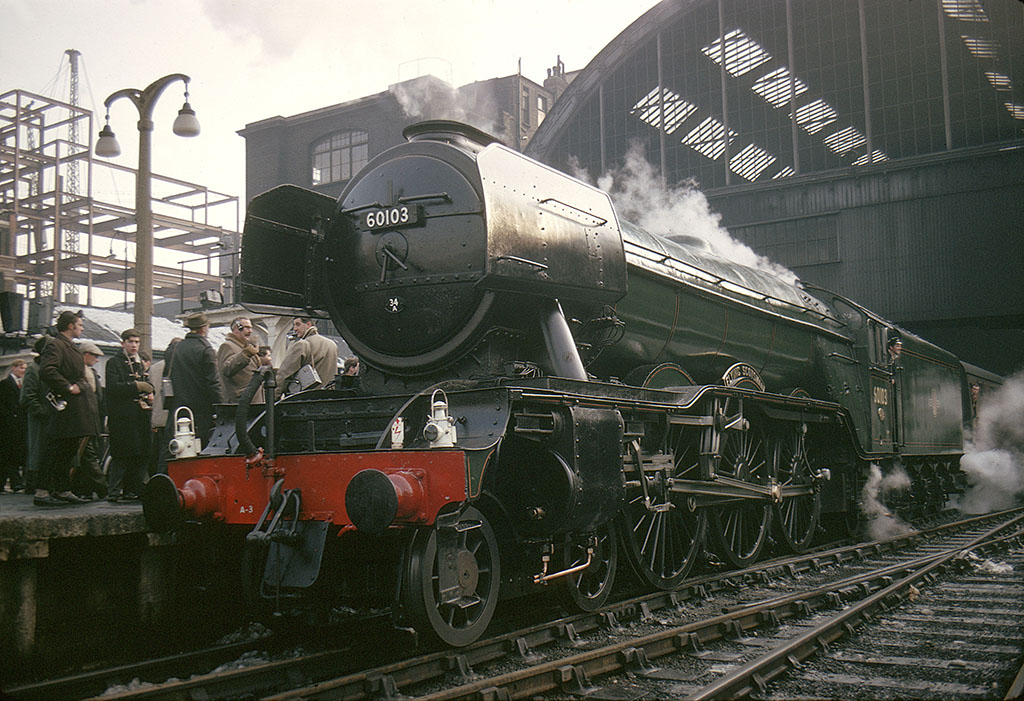
The Flying Scotsman at King’s Cross, 1963.
Back in Blighty, 4472 continued working on the main line until her certificate expired in 1993. By 1995, it was in pieces at Southall Railway Centre in West London, again facing an uncertain future due to the cost of restoration and refurbishment necessary to meet the stringent engineering standards required for main line operation.
Salvation came in 1996 when the locomotive was bought by Dr Tony Marchington, who spent three years and £1 million restoring it, before it was effectively put up for sale again, with the National Railway Museum in York taking ownership in 2004 following a high-profile national campaign.
Since 2006, the Flying Scotsman has been undergoing a £4.2 million restoration in the museum’s workshop, and is once again resplendent in its BR green livery, with the next chapter in the Flying Scotsman’s story set to be its triumphant return as a working museum exhibit, conquering yet another record as the oldest main line working locomotive on Britain’s tracks.
Undoubtedly the jewel in the crown of the museum’s world-class collection, and, given its track record of flying in the face of adversity, it will surely be around to captivate the public for generations to come.
This feature originally appeared in 2016.
TAGS

